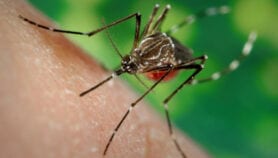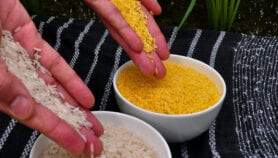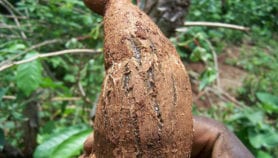By: Wagdy Sawahel
Send to a friend
The details you provide on this page will not be used to send unsolicited email, and will not be sold to a 3rd party. See privacy policy.
[CAIRO] Iran’s first genetically modified (GM) rice has been approved by national authorities and is being grown commercially for human consumption.
Researchers at the Agricultural Biotechnology Research Institute of Iran (ABRII) modified rice to resist attack by insects by inserting a bacterial gene that produces a toxin. The chemical kills insects but is harmless to birds and mammals (see Researchers pinpoint pests’ weak spot for natural toxin).
The research was conducted in collaboration with the Philippines-based International Rice Research Institute (IRRI) using a local variety of aromatic rice, Tarom molaii.
Following laboratory tests, the GM rice was grown in a greenhouse and in field experiments from 1999 to October 2004 — a total of six generations.
ABRII’s director general, Behzad Ghareyazie, told SciDev.Net that in the trials the GM rice killed close to 100 per cent of the four species of insect pests attempting to feed on it.
The ABRII team published its initial research in the journal Molecular Breeding in 1997 and in the Journal of Economic Entomology in 2000. The results of the field trials and animal feeding experiments are also being prepared for publication.
Iran is one of the world’s major importers of rice.
Mohammed Hamoud, head of genetic research in the botany department of Tanta University, Egypt, told SciDev.Net the Iranian rice could provide a cost-effective way of controlling pests, as well as being environmentally friendly because it would decrease pesticide use.
However, he added that the rice should undergo more careful testing to ensure it is safe for human consumption and to minimise environmental risks, such as the development of resistance in the pests to the toxin in the rice.
In addition to GM rice, Iran has produced different GM plants in the laboratory, including insect-resistant maize, cotton, potato and sugar beet; and herbicide-resistant canola; salinity and drought tolerant wheat; and blight-resistant maize and wheat. Greenhouse and field tests experiments are being conducted on such of these crops.
Read more about GM rice in SciDev.Net’s GM crops dossierReferences: Molecular Breeding 3, 401 (1997); Journal of Economic Entomology 93, 484 (2000)













